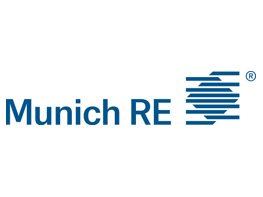Employment Claims Surge as Workplace Transformation Creates New Risk Exposures

Nearly seven in 10 organizations experienced employment-related claims in the past year while new workplace dynamics are creating unprecedented risk exposures, according to an analysis of the employment practices liability landscape by QBE Insurance.
The modern workplace transformation is driving a notable increase in employment-related legal challenges, QBE reported. Among the 200 legal and HR professionals surveyed from companies with annual revenues between $500 million and $5 billion, 69% reported their organizations faced claims alleging discrimination, harassment, retaliation or other employment issues over the past 12 months.
Looking ahead, the trajectory for employment-related claims appears concerning. More than four in 10 respondents anticipate claim frequency will rise over the next year, with 8% predicting a significant increase and 34% expecting a slight uptick.
The risk landscape is shifting toward both traditional and emerging exposure areas. Wage, hour and leave-related issues top the list of claims concerns over the next 12 months at 55%, tied with breach of employment contract claims.
However, newer risks are gaining prominence, with 51% identifying artificial intelligence use in HR functions as a likely source of future claims, matching the percentage concerned about workplace harassment and discrimination.
The rapid adoption of AI technology in human resources processes presents particular challenges, according to QBE. An overwhelming 84% of organizations currently use AI for tasks like resume screening and performance reviews, while another 11% plan implementation within the next year.
Despite this widespread adoption, 72% of respondents expressed concern about associated risks, including potential algorithmic bias that could trigger discrimination claims under federal civil rights legislation.
Return-to-office mandates are creating additional friction. With 84% of organizations requiring employees to work on-site at least three days weekly, 43% report these policies are driving increased employee claims. The impacts extend beyond legal exposure, with 53% citing higher operational costs and 36% noting decreased employee morale and satisfaction, the report said.
Risk Management Faces New Complexity
The financial and operational consequences of employment-related claims are substantial and multifaceted, according to QBE’s report. Nearly two-thirds of respondents identify financial costs including legal fees, settlements and fines as the most significant impact, while more than half point to reputational damage (53%) and reduced employee morale (52%) as major concerns.
The resolution timeline for employment claims typically spans three to six months for 61% of cases, though some extend beyond a year, the survey showed. This prolonged process can compound the negative effects on workplace culture and business operations. the report noted.
Organizations are also grappling with diversity, equity and inclusion program challenges.
“While the intention of these initiatives is to foster more diverse and inclusive work environments, a number of lawsuits are alleging reverse discrimination – claiming that the hiring or promotion of individuals in minority or underrepresented groups has disadvantaged individuals in majority groups,” the report’s authors noted.
Overall, 69% of respondents expressed concern about potential reverse discrimination claims related to these initiatives, with 19% reporting high levels of worry about litigation risks stemming from DEI programs in the coming year.
Strategic Insurance Response Required
The evolving risk environment is prompting organizations to reassess their employment practices liability (EPL) insurance strategies, the report said. Among companies with EPL coverage, 60% plan to adjust deductibles or premiums in the next year, while 57% intend to update policies to reflect new legal requirements and 51% aim to add coverage for specific emerging risks.
Insurance carriers are responding by expanding value-added services. The most common offerings include comprehensive risk assessments, employee training programs and support for workforce reductions, each utilized by approximately 60% of insured organizations.
Organizations without EPL coverage cite various reasons for their decision, including belief in adequate coverage through other policies (60%) and confidence in internal risk management (59%).
However, a concerning disconnect exists between confidence and reality. While 72% of respondents express confidence in their risk management effectiveness, the anticipated increase in claims suggests existing practices may be insufficient for today’s complex workplace environment, the QBE report said.
View the full report here. &










